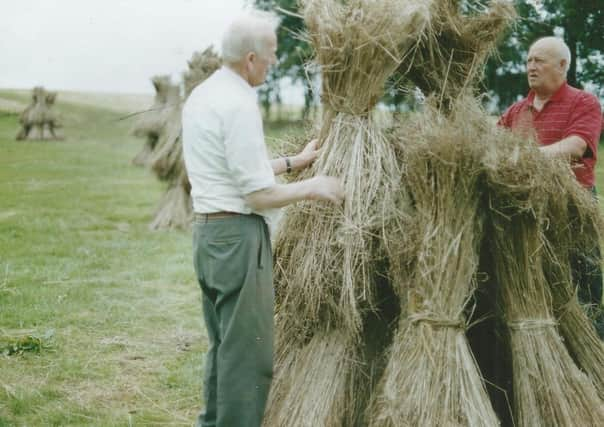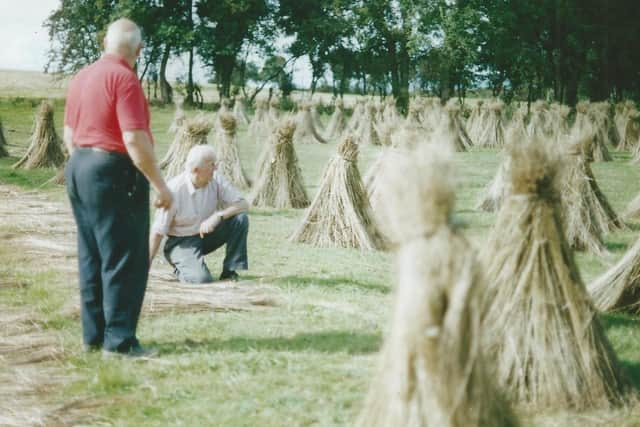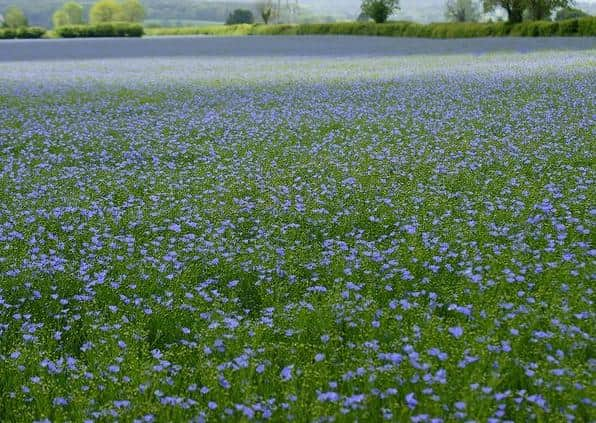Rich tapestry of the past woven from memories of flax fields


Apart from the evocative, long-gone agricultural practices, terms and techniques mentioned in her letter - retting, scutching, corn fiddles, ‘sheigs’ and ‘shows’ - readers enjoyed Ivy’s vivid memories from nearly three quarters of a century ago, of driving a Ford Ferguson tractor and “putting out the smelly cargo” when she was a 14- or 15-year-old girl.
She recalled long, sultry, summers when “our two flax fields were a sight to behold - a sea of bright blue flowers shining in the sunlight.”
Advertisement
Hide AdAdvertisement
Hide AdHer enchanting tale of flax-growing and harvesting was recounted with an eloquence that warms the heart in these currently difficult times and Roamer was particularly privileged to chat to the sprightly 88-year-old Ivy on the phone.


And I wasn’t the only one enthralled by her reminiscences to ring her up!
“I read with great interest last Friday’s article,” began retired Cookstown-farmer Fred Faulkner’s letter, “later that evening I phoned Mrs Lambert and had a long conversation with her. I could hardly get off the phone!”
Fred’s letter continued “We seemed to have a lot in common, especially early farming practices.”
Advertisement
Hide AdAdvertisement
Hide AdI rang Fred as well (oh, to be able to travel and meet people face to face!) and he said he’d a collection of “all the old flax equipment.”


He told me about linen, and outlined some of the historic flax and figures!
Apparently the development of the linen industry in Ireland came with the Huguenots, mostly in the north, around Lisburn.
“Around the time of the famine,” Fred told me, “there were something like a quarter of a million acres of flax in the north. Today there’s barely a single flax field anywhere.”
Advertisement
Hide AdAdvertisement
Hide AdThere’ll be more from Fred here very soon about flax and flax-growing.
He’s a member of a local vintage club near Cookstown “and at my behest a few years ago” he explained in his letter “we planted about three quarters of an acre of flax which turned out to be a very successful enterprise. The whole process was gone through, pulling, retting, drying, hand scutching and so on.”
They made a video of all the different stages of the process and Fred still has some of the beets and has been giving talks and demonstrations prior to the pandemic.
He sent me several photographs of the project, though sadly, the two club members shown in the pictures have passed away since the photos were taken.
Advertisement
Hide AdAdvertisement
Hide AdThey are George Milligan (in a white shirt) and Billy Glasgow (in the coloured shirt).
In one of the photos they are both standing either side of the ‘stook’ (upright sheaves or ‘beets’) that they’ve just made.
“A single stook contained 12 beets,” Fred explained, “and a double stook was 24.”
In the other photograph Mr Glasgow is standing and Mr Milligan is kneeling amongst a field of beets that have been ‘gated’ which means “spread out like a miniature ‘tepees’ to dry” Fred told me.
Advertisement
Hide AdAdvertisement
Hide AdHe also stressed “flax wasn’t cut, it was pulled and then put in the flax dams” which Ivy Lambert also recounted last week.
“The flax was pulled and put into ‘beets’ rather like sheaves of corn,” Ivy told us, adding “these then went to flax dams filled with water and were submerged for some weeks till they were absolutely stinking. This was called ‘retting’. The beets were then taken out of the dam and spread in lines on the fields.”
As well as Fred Faulkner, Anne Stevenson (nee Millar) enjoyed reading Ivy’s memories and has her own very vivid memories to share.
“I too grew up on a farm near Douglas Bridge where my Father grew flax,” 85-year-old Anne’s letter began, and with a big thank you to her, and to Ivy and Fred, I’ll leave it to Anne to round off today’s page with more hugely evocative reminiscences.
Advertisement
Hide AdAdvertisement
Hide Ad“The flax could not be grown on the same ground for six or seven years as it impoverished the land too much. The beets were packed tightly in the dam and then fair-sized stones were placed on top to keep them below the water line once the dam was flooded. They stayed in the dam to ‘ret’ for approximately two weeks.
“My father would take us children each evening to tramp the flax, in other words step from stone to stone to push any protruding ends back into the water. How I hated this job because of the snails or other creatures on top of the stones. “Removing the retted flax from the dam was a very heavy, smelly job, but when spread out on a field and dried it was taken to the local scutch mill owned by Dan Ward in Douglas village.
“The local men worked in this mill and I remember the evening it went on fire. We children were roused from bed to see the huge blaze in the distance which filled the sky.
“A lot of the local girls worked in Sion Mill. They walked past our farm each morning at about 6am to go four or five miles across the Swing Bridge (the suspension bridge) over the River Mourne, to the mill, returning after a day’s work sometime after 6pm.”